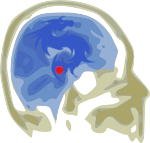
I was recently in New Orleans working with different organizations and government officials to better understand the opportunities that data-driven websites and online information systems would present in mitigating the effects of tragedy. In their case, the tragedy has happened, and they are very aware that it might happen again. Their experience in having to rebuild after Katrina has made it clear to them the importance of being prepared, and the things that become important in this kind of an unprecedented disaster.
As an information technologist, these discussions were like a perfect laboratory for me. At their best, information systems mirror human interactions and processes. Survival of the fittest is often a cliche', but in the case of New Orleans, it's a fact of everyday life. The organizations, people and systems that survived the storm did so because they were the best at connecting with one another and with vital resources. Because the internet is one of the most stable infrastructures on the planet, it also made sense to me that the organizations who survived mobilized the world wide web.
I come from the desert: a place where water is as much of an issue as it is in New Orleans. Instead of living with the threat of becoming inundated, in the desert we live with the vulnerability of not having enough water, and also with the vulnerability of having too much of it at once. Especially with the progression of global climate change, arid air systems do not have the insulation that wetter climates do. One bad storm or freeze has the potential to wipe out entire crops, and wash our topsoil away. While emergency water supplies can be mobilized temporarily to provide water for consumption - during a disaster, the real threat is that we will loose the ability to feed ourselves.
Having worked with organizations in New Mexico whose business it is to nurture and facilitate the production of food on a local level, I have become versed in the issue of food security as it pertains to state emergency systems, granting programs, partnerships between state agencies and organizations who work directly with food producers. As with the example of New Orleans, it's time to add technology to the list of tools that we can mobilize to help cushion us from the vulnerabilities we face living in the climate that we do.
What might this look like?
- Imagine a website where farmers and other food producers could report their yields, what they are planting, difficulties they are having, and submit the results of tests on the soil, water, and crops online.
- Imagine being a farmer with access to tools that will keep track of this information for you, and help you report to different governmental and non-governmental organizations. Imagine having that information translated into maps that show, in real time, issues and vulnerabilities as they arise, and that enable you to analyze your crops and yields with those of other farmers, and those of past years.
- Imagine being a farmer who is connected with other farmers in your community for project, resource and information sharing, and being able to mobilize a workforce of community members for skill sharing, learning, and labor.
- Imagine being a farmer and having access to reading about and connecting online with other farmers who have had to deal with similar issues and solutions that made a difference for them.
- As an individual, imagine knowing where your food comes from, and being able to see on a map the location of specific markets and farmers, and visually see a representation of the types of crops they are planting, raising, harvesting.
- Imagine living in a state where, instead of waiting for the inherently slow moving arm of government to respond and support the health of our food systems, being able to rely on local organizations and associations to organize around cooperative solutions.
- Imagine an online communication system that connects farmers directly with policy makers and organizations, and where conversations and forums around specific issues are documented and available between these different stakeholder groups, and for the community.
- Imagine being a child or student, and being able to learn about food and food systems interactively and using real data from local farms. Imagine being able to see what kinds of crops are raised near by, and being able to connect directly with the farmers you are learning about.
- Imagine living in a community coming together in support of local economies. Where the day to day accomplishments and struggles of real people are visible, and where we all have the power to directly see the difference that is being made by individuals just like us in support of that community.
Although the means of food production, especially in smaller scales, might not make direct use of technology, the systems that support farmers and connect them with their communities can and should. These systems, once built, would distribute the burden of administering and recording data and information, while at the same time providing a multitude of ways that this data might be used and communicated.
For more information or if you have questions or comments, please contact me.
